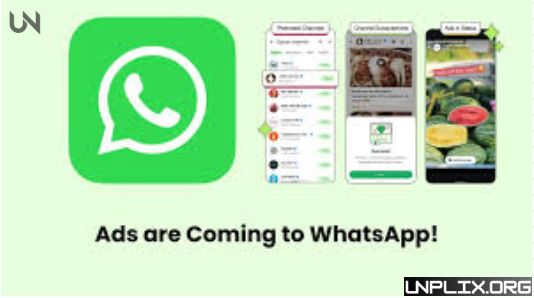WhatsApp has taken a major step toward monetization with the introduction of Status Ads and Promoted Channels in its latest Android beta update (version 2.25.21.11). This marks the first time the platform is integrating direct advertising into its core interface—years after Meta acquired it.
With over 2 billion users worldwide, WhatsApp has long been ad-free. But that’s changing. While the update brings new opportunities for brands and creators, it also raises questions about privacy and user experience.
What’s New in the WhatsApp Update?
1. Status Ads
Status Ads are promotional images or videos shown between users’ Status updates—similar to Instagram Stories ads. They appear only in the Updates tab and are clearly labeled “Sponsored”.
These ads do not disrupt private chats or group conversations. Users can skip, block, or report specific advertisers, maintaining some level of control over what they see.
2. Promoted Channels
Promoted Channels allow public channels to appear at the top of WhatsApp’s channel directory. These are also labeled “Promoted”, similar to paid posts on Facebook or Google Ads.
This helps creators and businesses boost visibility quickly without depending solely on organic growth.
Also Read: Amazon Prime Day 2025 Sale Dates Teased: Big Discounts and New Launches
Why WhatsApp Is Adding Ads
Monetizing the Updates Tab
The Updates tab (which houses Status and Channels) is one of WhatsApp’s most visited features. Meta reports that over 1.5 billion users engage with it daily. By placing ads here, WhatsApp can generate significant revenue without invading private chats.
Aligning with Meta’s Super-App Vision
Meta aims to turn WhatsApp into a “super-app”—a platform where users can chat, shop, follow creators, and now view sponsored content—all in one place, much like China’s WeChat.
Competing with Other Messaging Apps
With increasing competition from Telegram, Signal, and Discord, Meta is enhancing WhatsApp to retain user engagement by offering monetization tools for brands and content creators.
How Ad Targeting Works
Meta says that WhatsApp ads prioritize privacy. Here’s how targeting is handled:
Targeting Signal Used?
| Location | Yes (based on IP & SIM data) |
| Language | Yes |
| Interests | Yes (based on followed Channels) |
| Chat content | ❌ No (chats remain encrypted) |
| User behavior | Limited to ad interaction |
Users can manage their ad preferences directly from the Privacy or Updates tab. They can also see why an ad is shown, block advertisers, or report irrelevant content.
User Feedback: A Mixed Reaction
Positive
Businesses and creators welcome the update as a new way to gain exposure and engage with audiences.
Marketers see value in WhatsApp’s high engagement rates, with Status messages having open rates above 90%.
Mixed
Some users are okay with ads, as long as they stay in the Updates tab and remain unobtrusive.
Others are skeptical about how their data might be used, despite Meta’s reassurances.
Negative
Privacy-conscious users worry this could lead to broader commercialization of the app.
A growing number are exploring alternatives like Signal and Telegram.
Key Benefits for Businesses
- High Engagement: With billions of daily users, WhatsApp offers unmatched reach.
- Cost-Effective Visibility: Promoted Channels give smaller brands a chance to rise above the noise.
- Seamless Integration: Ads appear naturally between content, enhancing click-through potential.
WhatsApp’s Commitment to Privacy
Meta has emphasized that:
- Private chats and groups will never display ads.
- Messages are end-to-end encrypted, and cannot be scanned or used for ad targeting.
- Ads rely solely on non-sensitive data like language, region, and public activity.
Maintaining user trust will depend on continued transparency and adherence to privacy standards like GDPR and CCPA.
Frequently Asked Questions (FAQs)
1. What are WhatsApp Status Ads?
They are sponsored posts appearing between users’ Status updates in the Updates tab.
2. Are these ads shown to all users?
Currently, they are available only to Android beta testers.
3. Will ads appear in private chats?
No. Ads are restricted to the Updates tab—not in chats or groups.
4. Can I turn off the ads?
You can’t disable ads entirely, but you can block or report specific advertisers.
5. What personal data is used for targeting?
Only general data like language, location, and channel preferences is used. Chats remain private.
6. What is a Promoted Channel?
It’s a public Channel that pays to appear at the top of the channel directory for greater visibility.
7. Are ads customized for users?
Yes, but targeting is minimal and doesn’t involve private messages.
8. Is my chat history safe?
Yes. All chats remain end-to-end encrypted.
9. How do I block a Promoted Channel?
Open the channel, tap the three-dot menu, and choose Block or Report.
10. Will these features come to iOS?
Yes. A broader rollout to iOS users is expected soon.
Conclusion
The rollout of Status Ads and Promoted Channels is a defining moment in WhatsApp’s evolution from a private messaging app to a monetized platform. While ads are limited to the Updates tab and user privacy is reportedly protected, this shift reflects Meta’s broader strategy to unlock new revenue streams.
For businesses, this presents a valuable new advertising channel in an environment with exceptionally high engagement. For users, the experience remains mostly unchanged—so far.
Going forward, the challenge for WhatsApp will be to balance revenue growth with user trust. Success will depend on keeping ads respectful, relevant, and optional—without crossing the line into the core messaging experience.



